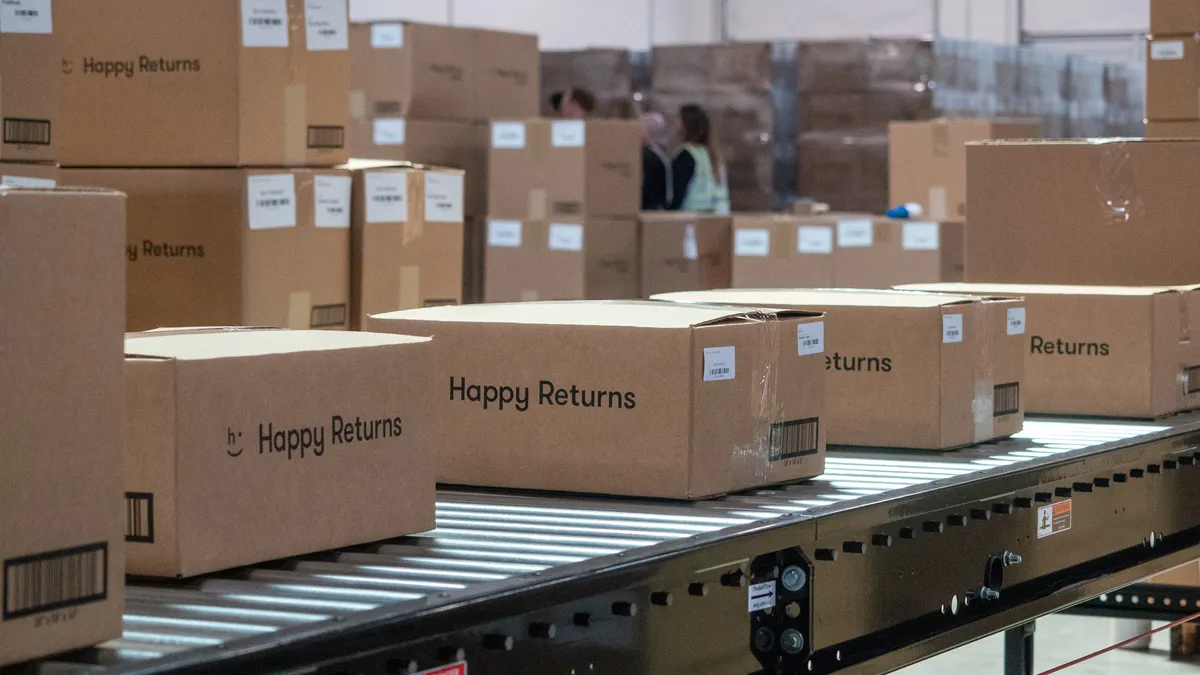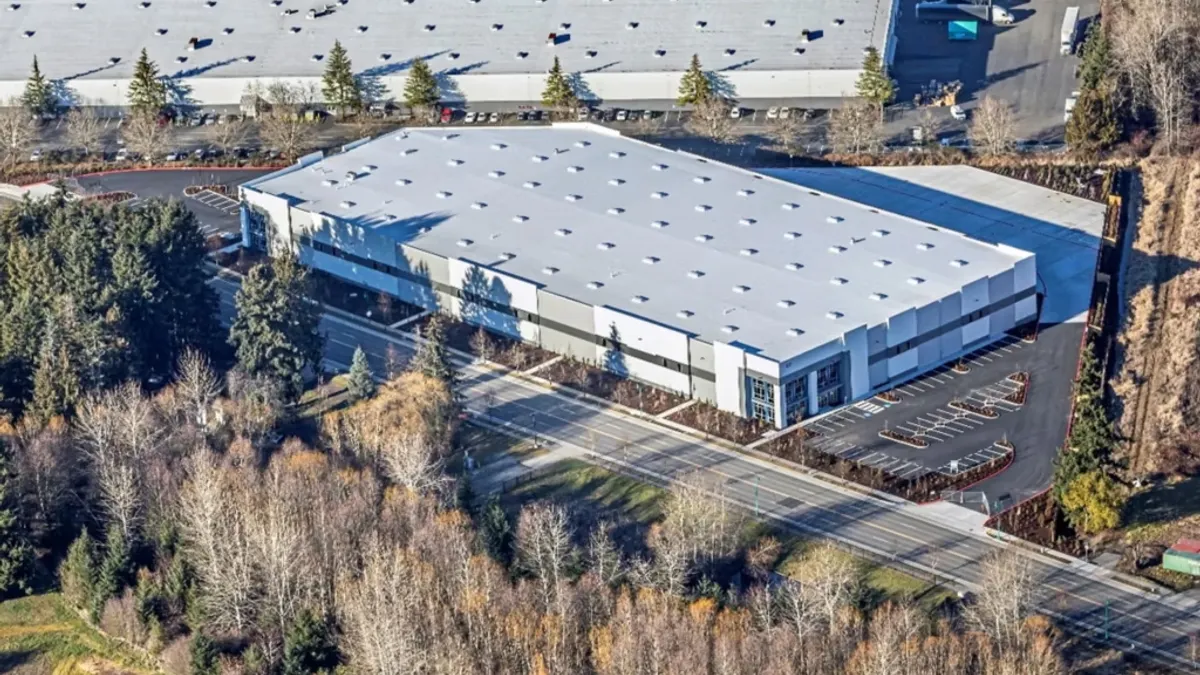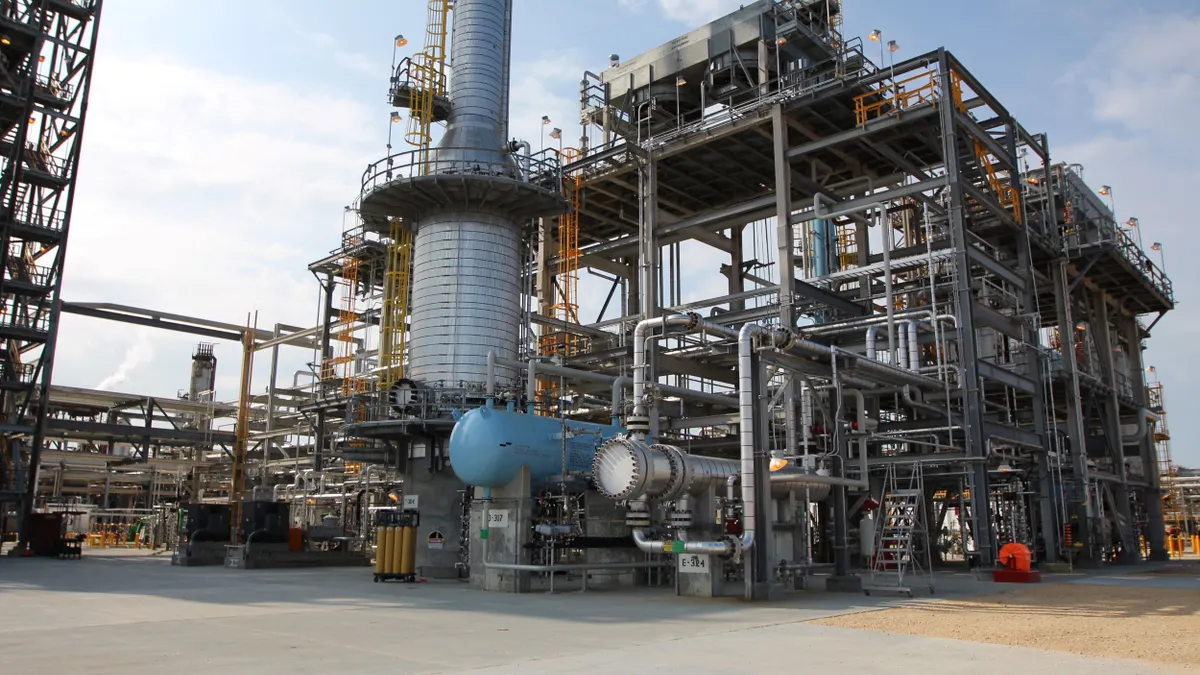While the president keeps saying "jobs, jobs, jobs," supply chain managers are faced with some tough choices as they compete for talent in a draining labor pool.
According to a May 2018 Bureau of Labor Statistics report, the country has less than one unemployed person for every available job. The result for companies hiring in logistics and manufacturing is that workers are in short supply, and wages are rising to help fill positions.
The rising pay rates are long overdue, Brian Devine, senior vice president of EmployBridge, an industrial staffing company, told Supply Chain Dive.
In May 2018, an EmployBridge subsidiary, ProLogistix, compared the average hourly pay rates of logistics hires to the consumer price index, from 2002 to 2018. The firm found that between 2002 and 2014, wages were largely stagnant, increasing 5.5% over the dozen years. Since 2014, however, the market has corrected slightly, with hourly wages rising 22.6% from $10.61 an hour to today’s average rate of $13.01 per hour (not seasonally adjusted).
"We’re getting closer to where wages need to be," Devine said, adding wages need to reach $14.10 an hour to keep up with inflation. But even at that rate, workers are "not driving a nicer car, not squirreling away more money in their 401k or taking fancier vacations, they’re just breaking even."
Labor issues are top of mind for managers
The correction is not surprising for facilities managers, as it is a result of supply and demand dynamics related to a tightening labor market. Still, it has led labor management to reach new heights as a priority for the industry.
"Companies got used to not having to dig into their budget for pay increases for 13 years,” Devine said. “Now the increase paid last year isn’t enough to make them competitive this year or the next year."
The industry-wide concern is reflected in DC Velocity and the Warehousing and Education Research Council (WERC)’s 2018 annual DC Metrics Survey. In this year’s edition, five of the top 12 metrics to watch were related to labor. By comparison, in 2016, not a single one of the top 19 top metrics was related to labor.
Tom Stretar, vice president of supply chain solutions and a labor management practice leader at Envista Corp. said overtime is a big issue for one manufacturing client. Last year, the client mandated overtime from its workers for 39 weeks – costing it a lot of money. This year, the manufacturer changed its schedules to offer weekends off, to help retain workers, Stretar told Supply Chain Dive.
When it comes to pay, it’s okay to be average
Wage pressures for logistics workers will continue to increase for the foreseeable future, because of the market and regardless of government regulations.
"Companies are seeing that independent of cities or states that have legislation, they need to get on board with having wage increases to attract people," said Stretar.
Executives should be running compensation studies to make sure their pay is competitive. Both Stretar and Devine recommend that companies pay in the 50th to 75th pay percentile — Stretar said that they don’t need to be on the upper edge of pay unless the work is highly specialized. "On the lower end, competition is tougher and it’s harder to recruit," he said.
"Companies got used to not having to dig into their budget for pay increases for 13 years."

Brian Devine
Senior Vice President, EmployBridge
In some cases, minimum wages don’t matter, as companies need to pay more to attract workers. "We’ve been so far above that, it doesn’t come into play," Devine said. "What I tell companies around the country is that in general, the de facto minimum wage to get a worker to show up every day is $12 an hour, and that’s for someone with no apparent skill."
About 17% of employees surveyed in the ProLogistix employee opinion survey said they left their last job because of pay. They’re not leaving for wage increases of 25 to 50 cents, but $1 or more per hour, according to the survey.
Staffing agencies are helping drive up wages, as they’re telling employers they need to increase hourly rates to attract workers. If the staffing agencies are offering higher wages to attract employees, employers will need to increase full-time employee pay as well.
Shift differentials matter, too. In the past, 25 to 35 more cents an hour was enough to make a difference, said Devine. Now employers have to pay at least $1 an hour more for a less traditional shift. And if the company needs a machinist, forklift driver, or other types of technical skill, the rate is higher.
When managers say they don’t have money in their budget to increase pay for a large number of workers, Devine asks them to identify the most critical positions, usually 15% to 20% of the jobs, and pay a more competitive rate there.
Other types of compensation helps … a little
The ProLogistix survey showed that pay was the first priority of those surveyed, and job security a close second. Job security isn’t just about having a job, but whether the hours are reliable.
"Most job surveys show pay and compensation as number three or four on the list," Devine said. "But for 11 straight years, pay rate was number one for us." Most employee surveys include people making $30,000 to $100,000 a year, which can skew the results. "You don’t leave a $70,000 job for $74,000. But you leave a $10 an hour job for $11.50. These guys are worried about food, shelter and security, not self-actualization."
Some companies try other perks, like offering free lunch, employee of the week programs and tickets to concerts, said Stretar, who consults on labor incentive programs. Those can have short-term positive effects, but in the long term, employees want better pay, or benefits like paid college tuition, to attract associates. "Pay is the primary pressure they’re facing," said Stretar.
Stretar is working with one client who has been using an incentive plan for individual and group productivity. Given their difficulty in recruiting employees moving into peak season, the client is now considering scrapping the incentive plan, and raising wages $2 to $3 an hour.
There are some ways to make inexpensive changes, like offering flexible or part-time hours, said Devine. Employee recognition can make a difference too. He encourages managers to stand by the time clock to thank employees by name for their hard work. "It engages the employees so they know their bosses care about them," he said.
Low labor availability leads to rising automation
Supply chain managers are forced to shuffle their budgets as a result of pay increases.
"When you have 300 to 400 workers in a facility and you have to move the pay rate from $12 to $13.50 an hour, that’s a significant investment," Devine said. "The alternative is more unacceptable. You can’t attract the workers to get the work done. They’re changing the labor portion of their budgets for sure."
As the labor force tightens, some companies are turning to automation. Companies are spending multiple millions of dollars to automate facilities to meet the one- or two-day shipping demands. They’re also investing in technology to decrease their cost per unit.
"If they can manage wage increases with automation or process improvement, and keep the cost per unit where it’s at or drive it down, executives are willing to make those investments," said Stretar. With the transportation market costs growing 6% to 7% a year, companies are investing in transportation management solutions as well.
By spending more up front, the managers hope these investments will pay off in the long run to reduce the cost per unit.




















